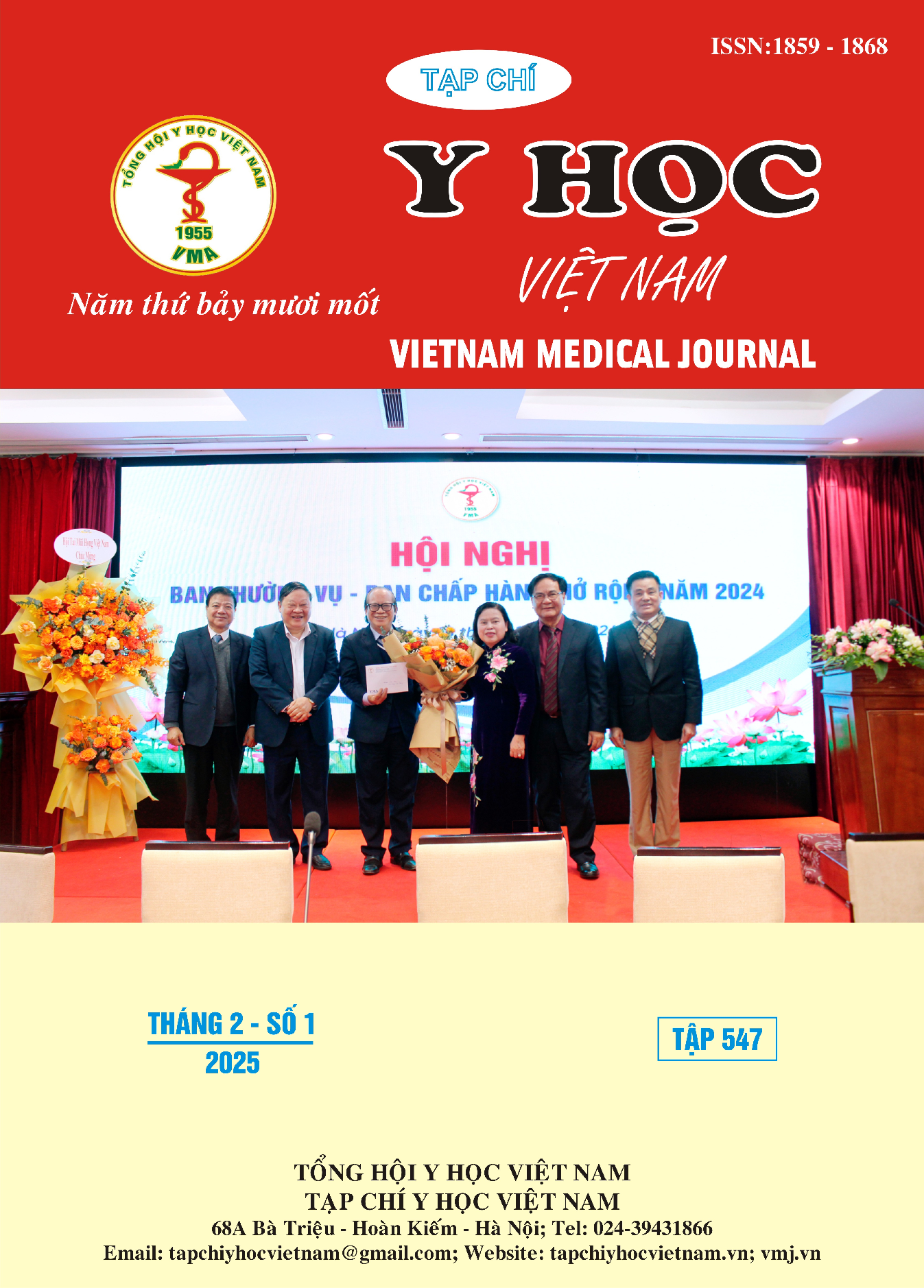LYMPH NODE METASTASIS CHARACTERISTICS IN PATIENTS WITH NON-SMALL CELL LUNG CANCER UNDERGOING ENDOSCOPIC SURGERY AT BACH MAI HOSPITAL
Main Article Content
Abstract
Objective: To determine the rate of lymph node metastasis and its association with various factors in patients with non-small cell lung cancer (NSCLC) undergoing endoscopic lobectomy and lymph node dissection. Methods: A descriptive, retrospective study of 74 patients diagnosed with NSCLC who underwent endoscopic lobectomy and lymph node dissection at Bach Mai Hospital between January 2023 and August 2024. Results: The disease was more prevalent in patients aged >65 years (41.9%), with a mean age of 61.8 ± 9.4 years. Most patients were male (66.2%). NSCLC was more common in the right lung (62.2%), with the upper lobe of the right lung being the most frequently affected site (32.4%). The majority of tumors were ≤3 cm in size (56.7%), adenocarcinoma type (63.5%), and non-invasive to the pleura (63.5%). Lymph node metastasis was identified in 21 of 74 patients (28.4%), with N1 metastasis in 18.9% and N2 metastasis in 9.5%. The rate of lymph node metastasis was significantly higher in patients aged 55–65 years (28.6%) compared to those aged <55 years (12.9%) or >65 years (12.9%) (p < 0.05). Lymph node metastasis correlated positively with tumor size, a statistically significant relationship (p = 0.019). There was no significant association between lymph node metastasis and factors such as gender, tumor location, pleural invasion, or histopathological type. Conclusion: Lymph node metastasis occurred in 28.4% of patients, including N1 metastasis in 18.9% and N2 metastasis in 9.5%. Lymph node metastasis was significantly associated with age and primary tumor size (p < 0.05). Other factors, including gender, tumor location, pleural invasion, and histopathological type, were not significantly associated with lymph node metastasis
Article Details
Keywords
Non-small cells lung cancer, lymph node metastasis
References
2. Seok Y et al. Frequency of lymph node metastasis according to the size of tumors in resected pulmonary adenocarcinoma with a size of 30 mm or smaller. Journal of Thoracic Oncology. 2014;9(6): 818-824.
3. Moulla Y et al. Predictive risk factors for lymph node metastasis in patients with resected non-small cell lung cancer: A case control study. Journal of cardiothoracic surgery. 2019; 14(1): 11
4. Lê Sơn Hải và cộng sự. Đặc điểm Di căn hạch Trong Ung Thư phổi không Tế bào nhỏ được phẫu thuật nội Soi cắt thùy phổi, vét hạch. Journal of 108 - Clinical Medicine and Phamarcy. 2021;16(DB4). doi:10.52389/ydls.v16iDB4.932.
5. Haruki T, Aokage K, Miyoshi T, et al. Mediastinal nodal involvement in patients with clinical stage I non-small-cell lung cancer: possibility of rational lymph node dissection. J Thorac Oncol. 2015;10(6): 930-936. doi:10.1097/ JTO.0000000000000546
6. Trần Minh Bảo Luân, Vũ Trí Thanh. Xác định các yếu tố liên quan khả năng di căn hạch và kết quả vét hạch qua nội soi lồng ngực trong phẫu thuật điều trị ung thư phổi không tế bào nhỏ. Journal of 108 - Clinical Medicine and Phamarcy. 2018;13(3).
7. Nguyễn Minh Chiến. Kết quả phẫu thuật điều trị Ung thư phổi không tế bào nhỏ giai đoạn I – II tại Bệnh viện Hữu Nghị Việt Đức. Trường Đại học Y Hà Nội; 2017
8. NCCN Clinical Practice Guidelines in Oncology (2024). Non Small Cell Lung Cancer, V11.2024
9. Shafazand S. et al. Aclinical prediction rule to estimate the probabilityof mediastinal metastasis in patients with non - small cell lung cancer. Journal of Thoracic Oncology;2006; 1(9): 953-959.
10. Zhao JL et al. Selective lymph node dissection for clinical T1 stage non - small cell lung cancer. Translational Cancer Research; 2019;8(8): 2820-282.


